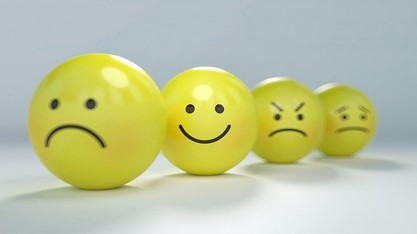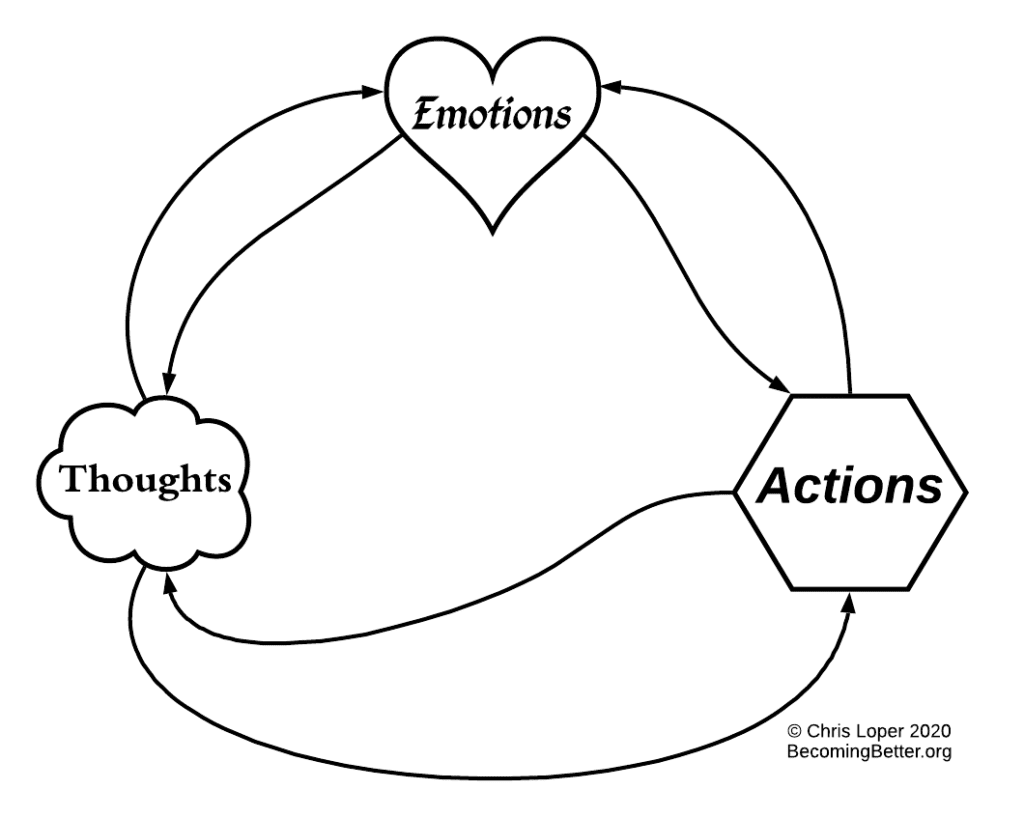
I used to struggle mightily with emotional regulation. A slight worry with a sprinkling of stress would lead to anxious rumination and catastrophizing. A minor frustration would lead to righteous anger, which would sometimes spiral out of control into full-blown rage, followed by shame and desperate sadness.
Eventually, I found the solution in one of the core tenets of Stoic philosophy.
It’s a common misconception that to be a Stoic means to be a stone-faced automaton – to neither feel nor express any emotion. But that’s wrong. Stoics feel emotions just like the rest of us, and they express them when appropriate. What they’re really good at is emotional regulation.
What is Emotional Regulation and Why is it Good?
Emotional regulation means not letting your feelings spiral out of control. It means not being controlled by your feelings. It means retaining your ability to choose virtuous action regardless of how you feel.
Developing the ability to regulate your emotions prevents you from getting mired in a swamp of bad feelings. You still have negative emotions, but they don’t outstay their welcome.
Plus, emotional regulation gives you greater freedom and enhanced executive function.
The Key to Emotional Regulation

Most of the time we feel a strong negative emotion, it’s because there’s something happening that’s outside of our control that we don’t like. We can’t control things like traffic, the weather, or other people. And these things often don’t do what we want them to do.
Another source of negative emotions is worrying about the future. We can’t control what happens tomorrow, next week, or next year, and this can be a source of anxiety. What if things don’t turn out the way I want them to?
We’re also powerless to change the past, but we still let it upset us.
So the key to emotional regulation is focusing on what you can control:
- Your breathing
- Your posture
- Your words
- Your strategies
- Your efforts
- Your resourcefulness
Focusing on what you have the ability to control reduces the power of any negative emotion.
Conversely, if you focus on things you can’t control, the emotion will get worse. So you should not focus on things like:
- The past
- Other people’s thoughts, opinions, words, and actions
- Particular outcomes you want/don’t want to happen in the future
Examples of Control-Based Emotional Regulation
Let’s say you’re driving on the freeway, and a nearby driver is being reckless. Naturally, you feel afraid because their behavior is dangerous, and you might also feel angry because they’re putting your life at risk, which is immoral.

These feelings are completely legitimate but letting them spiral out of control won’t help. So focus on what you can control. Perhaps you can slow down or change lanes to put some space between you and that other driver. You can increase your own following distance. You can turn the stereo off and give your full attention to the road.
These actions remind you that you’re not completely powerless – you’re literally in the driver’s seat, at least of your own car. You can’t improve other drivers’ behavior, but you can improve your own.
Here are some other examples:
- I can’t control whether or not people litter on hiking trails, but I can pick up the trash that I find.
- I can’t control whether or not the TSA line at the airport will be efficient, but I can arrive early, and I can practice patience while I’m waiting.
- You can’t control whether or not your coworkers do their jobs effectively, but you can do your own work to the best of your ability.
- You can’t control whether or not the stock market goes up, but you can invest in such a way that you’re not dependent on short-term outcomes.
Thoughts and Actions Influence Emotions
Remember that there’s always a dynamic interplay going on between our emotions, thoughts, and action:

And the one part of this feedback loop we have no direct control over is our emotions. So we have to focus on our improving our thoughts and choosing our actions wisely.
Automatic Thoughts
Automatic negative thoughts (A.N.T.s) are a common source of negative emotions, but you don’t have to believe everything you think. You can learn to recognize these reactive thoughts for what they are – just thoughts – and choose better ones.
Let’s say that someone is unexpectedly rude to you. Your immediate reaction is to think that they’re a jerk. That reaction was automatic, outside your control. But you can reinterpret the situation differently. Instead of assuming they’re a jerk, consider the possibility that they’re having a really tough day.
In the heat of the moment, it’s difficult to be aware of your automatic thoughts, so cultivating mindfulness is very helpful. Meditating every day has made me much better at catching these thoughts on the fly and counteracting them before I embody them emotionally.
Feeling Powerless is the Problem
Negative emotions get out of control when we feel powerless.
Anger, as I’ve mentioned before, is about feeling powerless. We feel angry when something we don’t like happens, and we’re unable to change it.
Anxiety, too, is often about feeling powerless.1 We feel anxious because bad things might happen in the future, and we don’t think we have the power to prevent them from happening.
Shame is also associated with feeling powerless. Shame is the feeling that you’re bad in some deep, intrinsic way. (This is different from guilt, which is just the feeling that you’ve done something bad.2) Shame is a state of mind that makes you feel broken, deficient, and incapable of change.
But You’re Not Powerless
You’re never completely powerless because there’s always something within your control.
Ask yourself proactive questions, such as, “What resources do I have?” “Who can I ask for help?” or “How can I reduce the odds of this from happening in the future?”
Then prove to yourself that you’re not powerless by taking some kind of positive action, even if it’s a very small action.
Even if the only thing you have control over is the pace of your breathing, put your energy there. Choose to take slow, deep breaths. Count them out in your head. This will activate your prefrontal cortex, which is the part of your brain in charge of emotional regulation.3

Change is Possible
Sadly, people often feel the strongest negative emotions about parts of themselves that they don’t like. They hate that they’re overweight, or they feel bad about procrastinating, or they think they’re not smart enough to pursue a new career. And they feel stuck, powerless, hopeless.
But the human brain is a dynamic organ, capable of great change. That change might be slower than we’d like, but it is possible. And it’s never too late.
Changing your habits is tough, so you should approach the endeavor strategically. And, if going it alone isn’t working out, remember that I’m here to help.
The Purpose of Emotional Regulation
Emotional regulation isn’t about never feeling negative emotions. That’s impossible, and even if it were possible, it would be unwise. Bad feelings exist for a reason. They send meaningful signals. We need them.
But we don’t have to be controlled by them. We can feel bad and still do good. We can choose to be productive when we feel lazy. We can choose wise actions when we feel angry. We can choose to be kind when we feel sad.
That’s the purpose of emotional regulation.
1 Specifically, Type 3 Anxiety.
2 Brown, Brené. “Listening to shame.” TED2012.
3 André, Christophe. “Proper Breathing Brings Better Health.” Scientific American. January 15, 2019.
